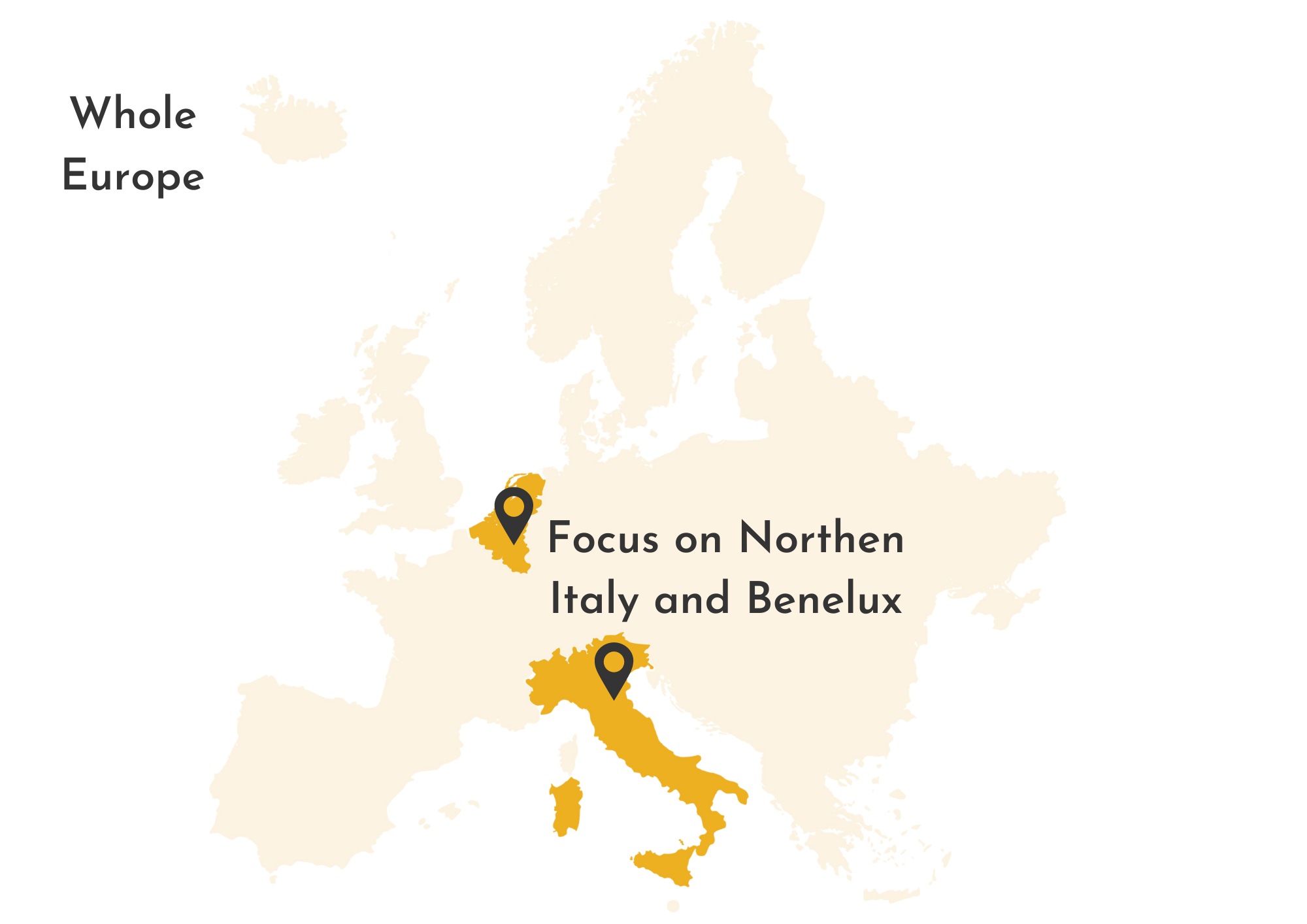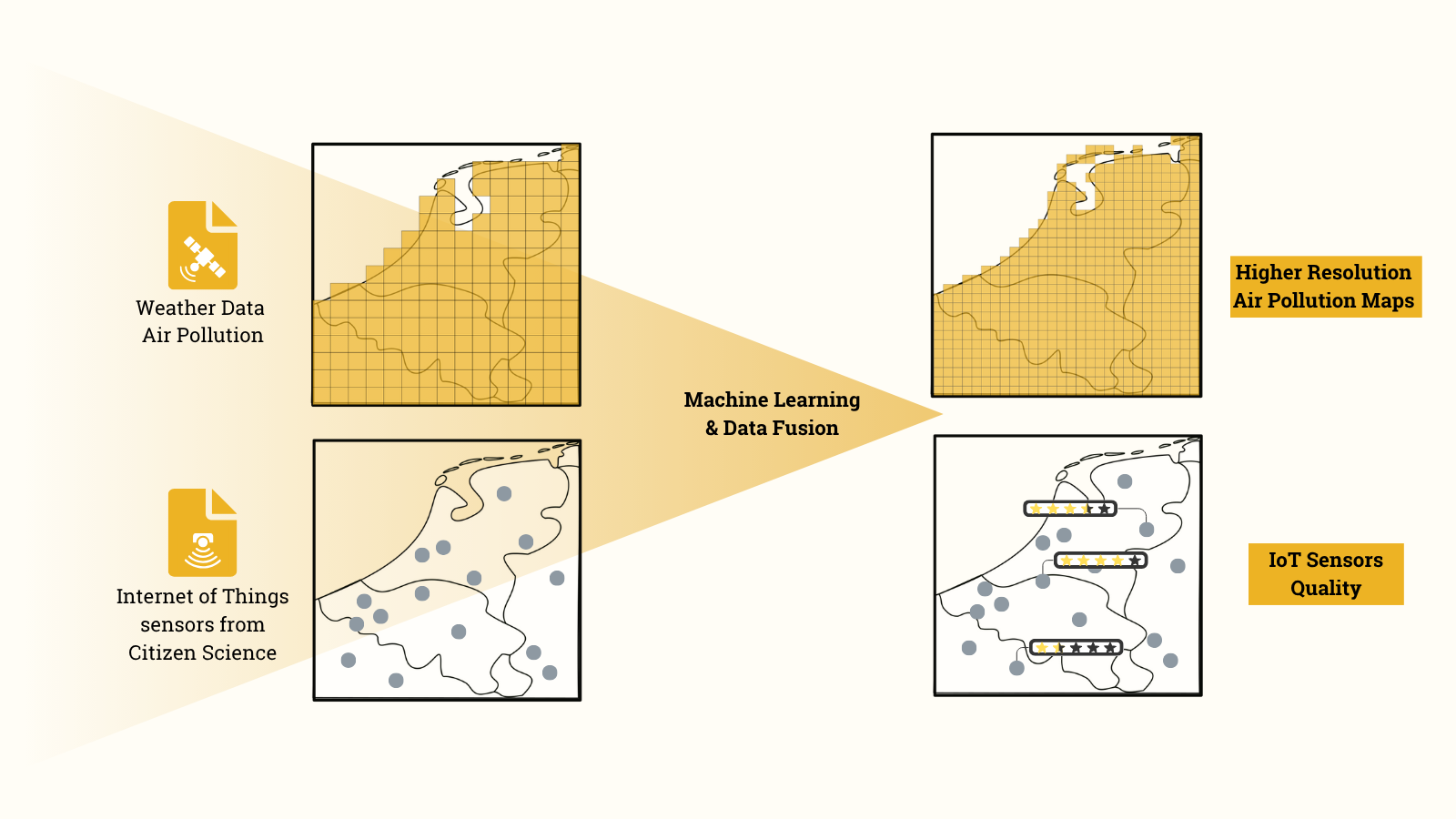Urban air quality monitoring with low-cost IoT sensors and citizen communities
LEADING PARTNER

LOCATION

Poor urban air quality causes serious health issues across Europe. Accurate and localized monitoring is the first step to address this. Currently, air quality monitoring networks are sparse and, even if of good quality, still face challanges in providing a high resolution overview of air pollution. This issue is especially pronounced at the local scale in densely populated areas, where strong gradients exist, and a wide variety of sources contribute to the overall pollution levels.
This pilot explores the potential benefits of Internet of Things (IoT) data in enhancing our understanding of local air quality. To achieve this, observations of various air pollutants (e.g., particulate matter, such as PM2.5 and PM10) from low-cost sensors are used. Notably, some of these sensors are operated and maintained by citizens, thereby fostering community involvement and promoting local engagement. Thus, these sensors form part of high-density measurement networks, significantly enhancing the capability to monitor air quality with great detail.
Altogether, by making use of this new high-resolution data set, the primary objective is to enable better health-related decisions and improve the approaches for assessing and monitoring the quality of air in urban areas, with an emphasis on local environments.
Simplified data flow schema for the air quality pilot. Author: AD4GD.
What is air pollution?
As defined by the World Health Organization (WHO), air pollution is the contamination of the air we breathe, indoors or outdoors, by any chemical, physical or biological agent that modifies the natural characteristics of the atmosphere and is potentially harmful to human and ecosystem health.
Which pollutants do we breathe daily?
Monthly mean PM2.5 surface concentration across Europe. Calculated using the ensemble median from CAMS Europe air quality forecast (0.1°x0.1° resolution; available via the Copernicus Atmosphere Data Store).
The term particulate matter (PM) refers to particles made of dust, dirt, smoke, or liquids that are suspended in the air. In the AD4GD project, we primarily focus on particles with diameters of less than 10 microns (PM10) and 2.5 microns (PM2.5). These particles pose a significant risk to human health because they can deeply penetrate the lungs, and PM2.5 has the potential to enter the cardiovascular system (Source: US EPA).
How does poor air quality affect health?
Regional distribution of estimated annual excess mortality rates from cardiovascular diseases (Lelieveld et al., 2021).
What are the challenges and opportunities of using low-cost IoT sensors?
The challenge of using low-cost sensors for air quality monitoring lies in their accuracy and reliability, which is not comparable to more expensive devices. These sensors are generally less durable, which can result in false signals or drifts over time, requiring their frequent replacement. Moreover, as these devices are maintained by non-professionals, there is a concern that measurement standards may not be consistently met, thereby affecting the quality and reliability of the measurement.
The opportunities of using low-cost sensors for air quality monitoring are significant. They enable the establishment of dense measurement networks that provide real-time, localized data on air pollution levels. These data can help in identifying pollution hotspots and trends, serving as a foundation for early warning systems that alert communities to unhealthy air conditions. Additionally, the extensive data collected over time supports long-term medical studies, offering insights into the impacts of air quality on public health. Thus, these sensors can inform mitigation and policy strategies, facilitate public health decisions, and contribute to more informed environmental and health research.
A goal of this pilot is to evaluate their usefulness and how they can be complemented by existing standard systems as reference sensors or model data.
How do we engage with citizen communities?
Engaging with citizen communities in urban air quality monitoring involves enhancing the distribution of low-cost IoT sensors to citizens and thereby enabling them to contribute to air quality data collection. This initiative fosters community involvement by educating and empowering individuals to monitor and understand local air pollution levels. For instance through accessible data platforms, citizens become informed participants and advocates for air quality improvement, enhancing both local engagement and environmental awareness.
Why is this important for Europe?
Advocating for a proper air quality is crucial to achieve the Green Deal goals of zero pollution in air, water and soil which targets “ improving air quality to reduce the number of premature deaths caused by air pollution by 55%” and “aligning the air quality standards more closely to the latest recommendations of the World Health Organisation”. (Source: European Commission).
Addressing this issue is also key for achieving the Sustainable Development Goals (SDGs). On one hand, the SDG target 3.9 aims to “substantially reduce the number of deaths and illnesses from hazardous chemicals and air, water and soil pollution and contamination” by 2030. Equally, the SDG target 11.6 ambitions to “reduce the adverse per capita environmental impact of cities, including by paying special attention to air quality and municipal and other waste management”
Tackling air pollution also benefits SDG target 13 on climate action in a scenario of complex interactions and local idiosyncrasies. Compliance with climate change mitigation policies could reduce PM2.5 emissions by 17% and prevent more than 74,000 premature deaths annually in Europe. (Source: WHO).
Do you want to learn more?
Enhancing Air Quality Monitoring with IoT and Low-Cost Sensors
Many European cities have air quality below WHO recommendations. IoT technology and low-cost sensors driven by citizen science offer a cost-effective solution to monitor air pollution.
Unlocking the Potential of Unconventional Data in Environmental Observations with Ulrike Falk from ECMWF
How is ECMWF participating in the integration of environmental satellite data with IoT and socioeconomic information whithin the context of the AD4GD project?
AD4GD pilots begin their journey with a workshop in Bonn
During the workshop, organized by Fraunhofer FIT, the most important features to be included in the pilots solutions were defined.
Stay tuned with us!
We share all our news & events in our newsletter






